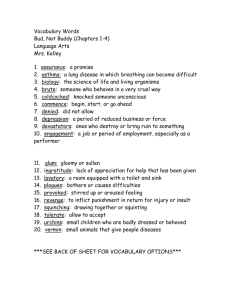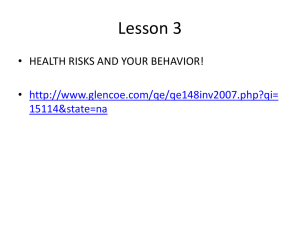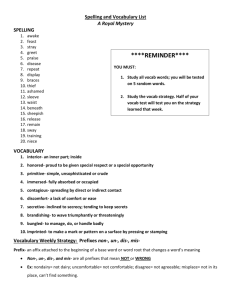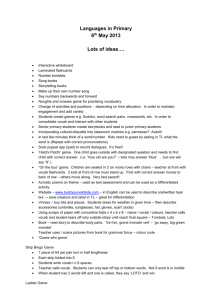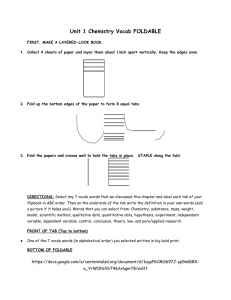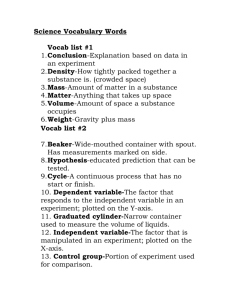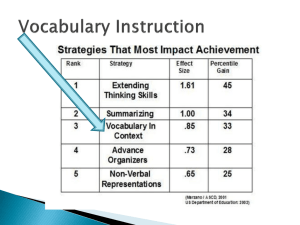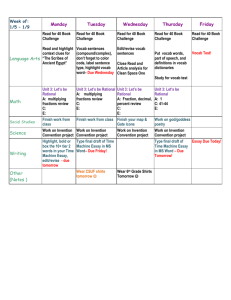Gas Laws Review Guide
advertisement
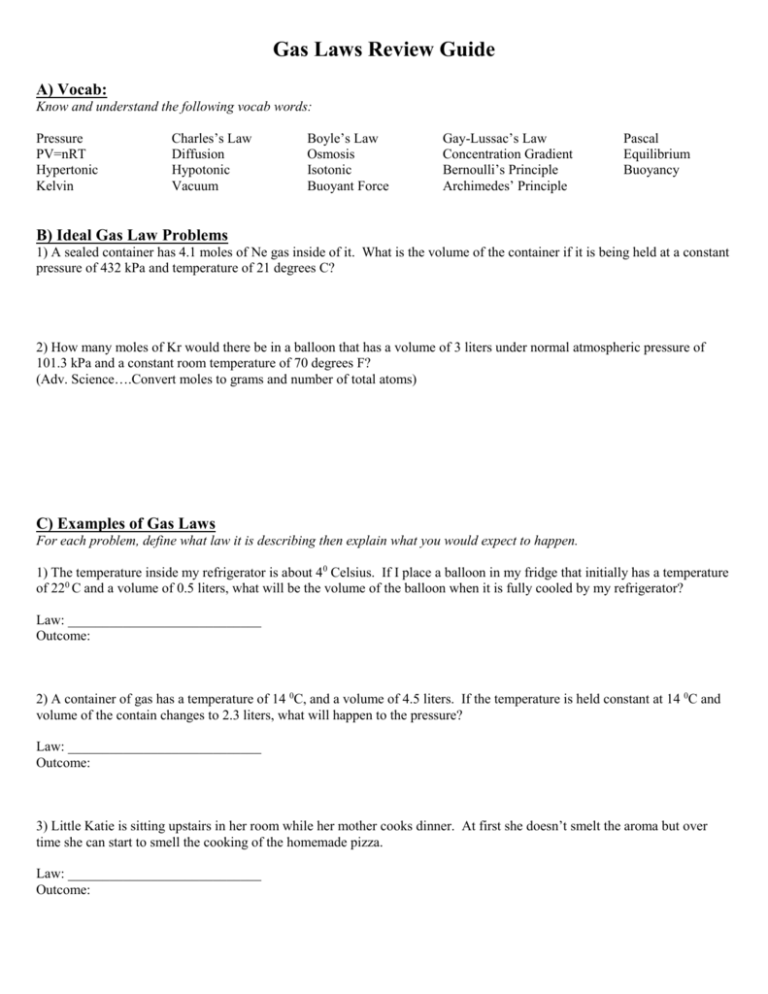
Gas Laws Review Guide A) Vocab: Know and understand the following vocab words: Pressure PV=nRT Hypertonic Kelvin Charles’s Law Diffusion Hypotonic Vacuum Boyle’s Law Osmosis Isotonic Buoyant Force Gay-Lussac’s Law Concentration Gradient Bernoulli’s Principle Archimedes’ Principle Pascal Equilibrium Buoyancy B) Ideal Gas Law Problems 1) A sealed container has 4.1 moles of Ne gas inside of it. What is the volume of the container if it is being held at a constant pressure of 432 kPa and temperature of 21 degrees C? 2) How many moles of Kr would there be in a balloon that has a volume of 3 liters under normal atmospheric pressure of 101.3 kPa and a constant room temperature of 70 degrees F? (Adv. Science….Convert moles to grams and number of total atoms) C) Examples of Gas Laws For each problem, define what law it is describing then explain what you would expect to happen. 1) The temperature inside my refrigerator is about 40 Celsius. If I place a balloon in my fridge that initially has a temperature of 220 C and a volume of 0.5 liters, what will be the volume of the balloon when it is fully cooled by my refrigerator? Law: ____________________________ Outcome: 2) A container of gas has a temperature of 14 0C, and a volume of 4.5 liters. If the temperature is held constant at 14 0C and volume of the contain changes to 2.3 liters, what will happen to the pressure? Law: ____________________________ Outcome: 3) Little Katie is sitting upstairs in her room while her mother cooks dinner. At first she doesn’t smelt the aroma but over time she can start to smell the cooking of the homemade pizza. Law: ____________________________ Outcome: 5) The tub of water pictured below has two different solutions of water separated by a semi permeable membrane. What would you expect to happen? Law: ____________________________ Outcome: D) Year End Vocab Can you define the following vocab terms we have covered throughout the entire year? Intro to Science Metric System Meter Liter Gram Steps of the Scientific Method Qualitative Quantitative Law Theory Control Independent Variable Dependent Variable Mass Volume Density Physics Distance Displacement Speed -Constant -Average -Instantaneous Velocity Acceleration Force Gravity Friction Newton’s Laws -1stlaw of motion -2nd law of motion -3rd law of motion Projectile Vertical Motion Horizontal Motion Circular Motion -Centripetal Force Momentum Law of Conservation of Momentum Energy Kinetic Energy Potential Energy Law of Conservation of Energy Chemistry Atom Proton Neutron Electron Nucleus Electron Cloud Atomic Mass Atomic Number Isotope Group/Family Ductile Malleable Valence Electrons Ionic Bond Covalent Bond Ion Molecule Compound Polar Molecule Nonpolar Molecule Chemical Equation Exothermic Endothremic Alkali Metal Alkaline Earth Metal Transition Metal Metalloid Halogen Noble Gas Acids/Bases Acid Base Neutral pH Scale Corrosive Electrolyte Hydroxide Ion Hydrogen Ion Hydronium Ion Indicator Neutralization Reactions Acid Rain Lab Safety There are flashcards online to help you review for this part of the test. If you go to the “Review” tab on my website under the Physical Science section on the left hand side the following links are great websites to review vocab terms. -Intro to Science and Physics Vocab -Acid/Base Flashcards -Gas Laws and Liquids Chemistry Vocab
